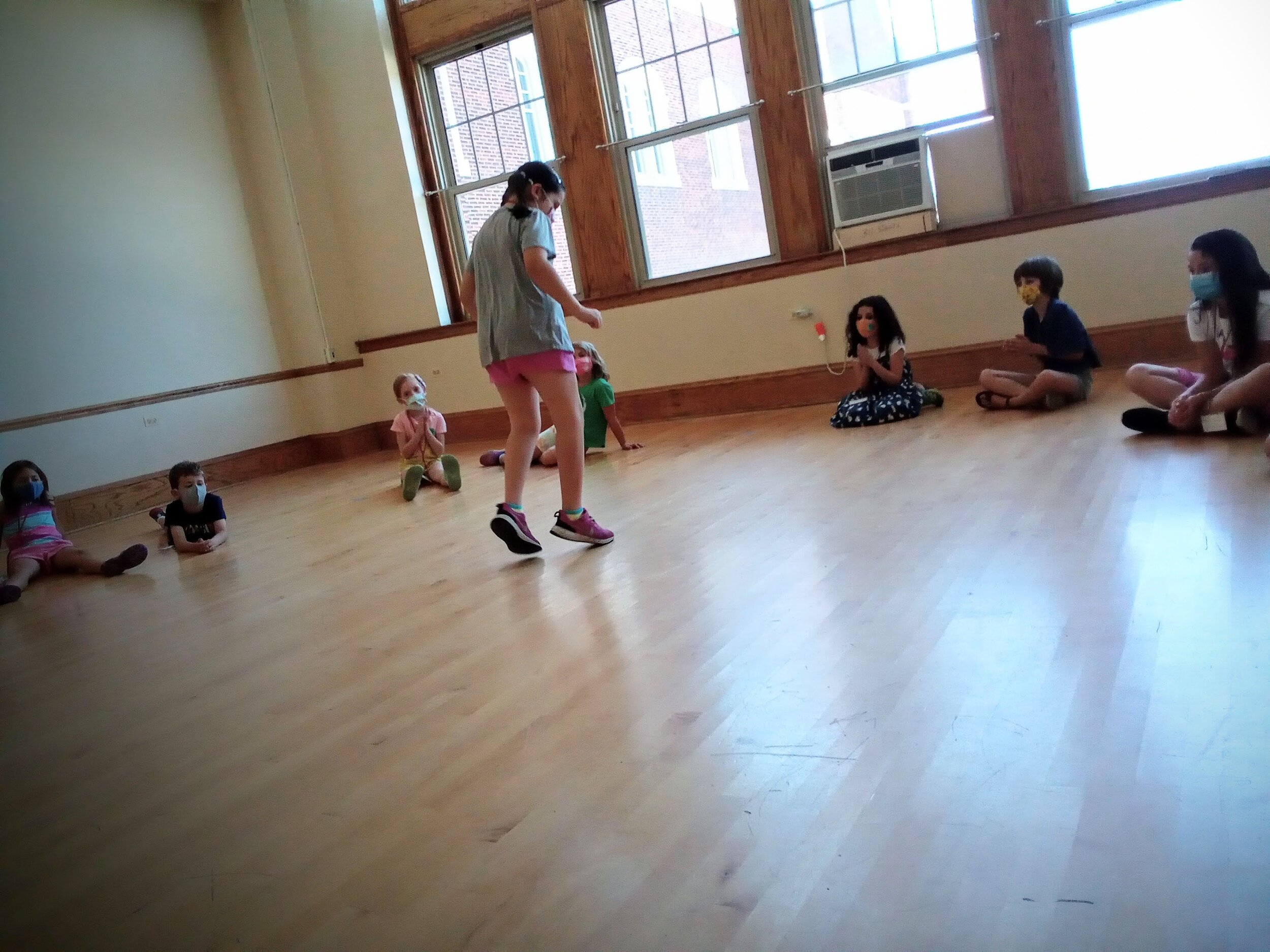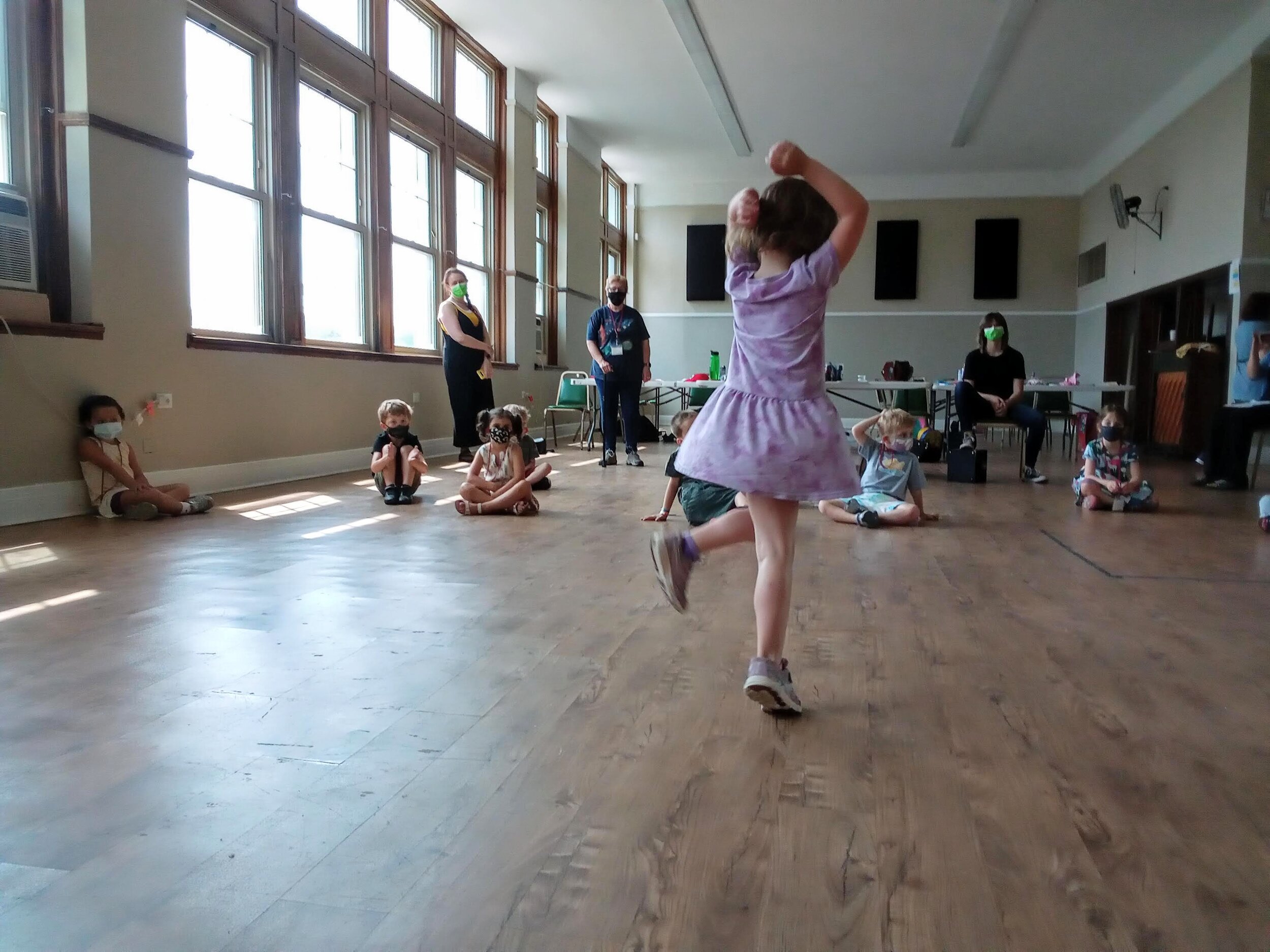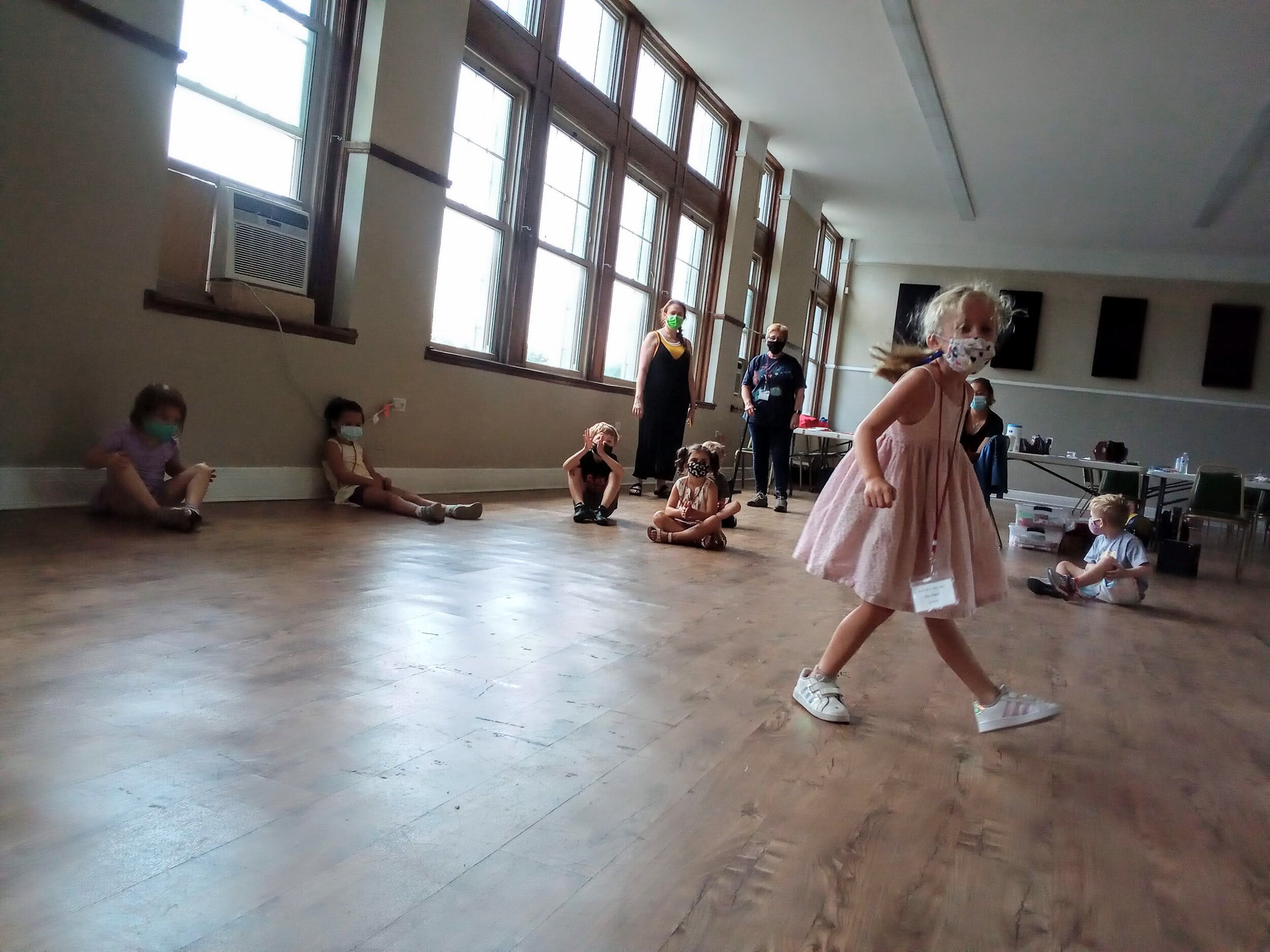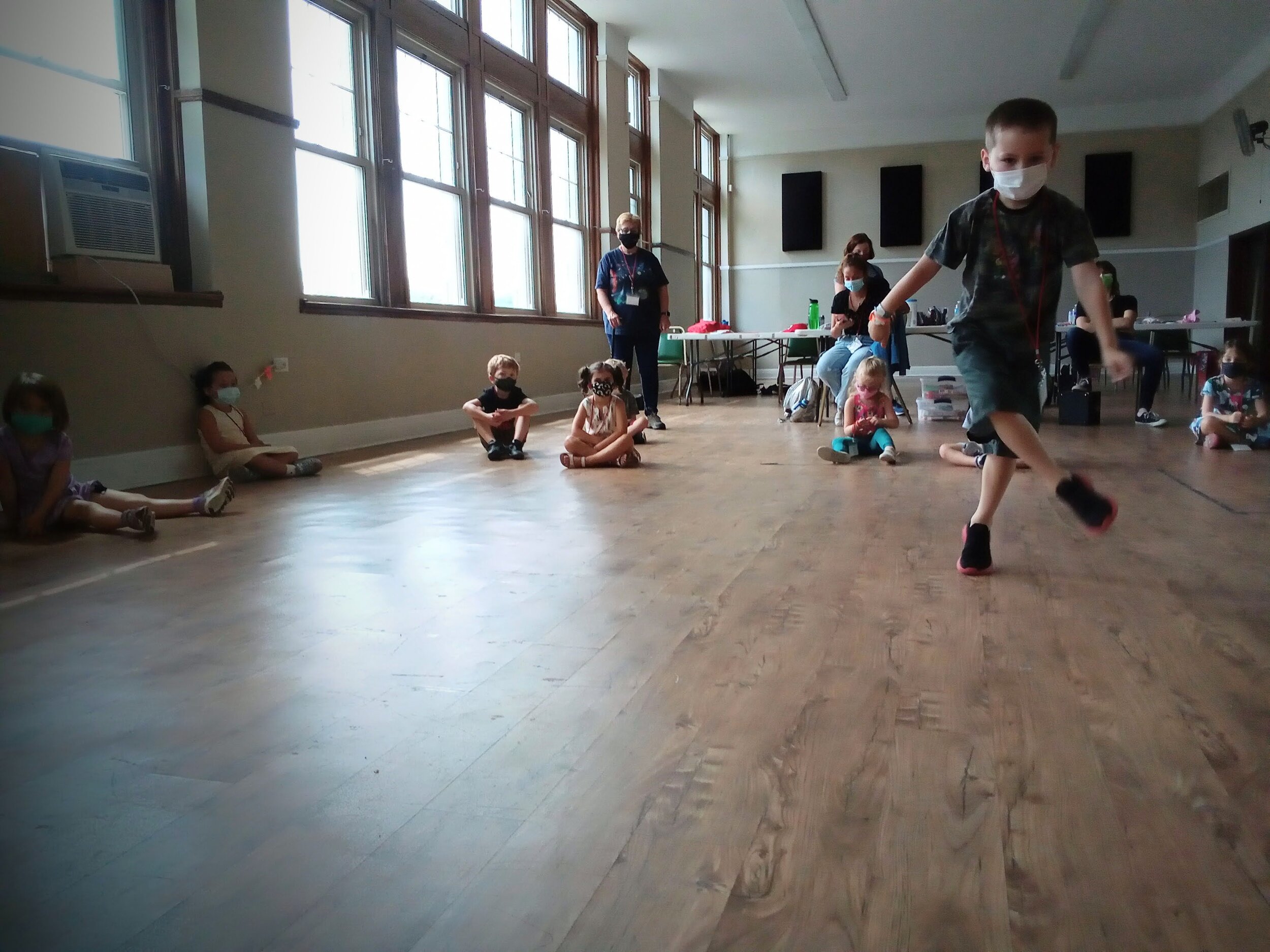Chicago: Irish Arts Week 2021
This summer during Irish Arts Week 2021, I taught a week-long introductory course in sean-nós dancing for fifty Chicago children ages 4-10. After reflecting on the week, I thought I’d share some of my approaches and tips for child-centered, experiential dance education.
Dance as joy: Joy is a crucial foundation for lifelong learning in the arts. This concept became my priority for the week. I hoped that children would experience the fun of movement and creating rhythms to traditional music—and that the joy they experienced would encourage them to continue developing, honing, and refining their dance skills in the future.
We talked about dance as a way to feel happy and share that happiness with our communities. Class started each day with opportunities for children to move freely to traditional music--in any way that was safe and felt good to them. We also played games like Freeze Dance to keep class playful, fun, and engaging.
Dance as exploration: Children are naturally wired to learn, and they learn readily when they are active participants in their learning. Children are keen observers who learn complex systems like languages and culture purely through observation, trial, and error. This natural form of learning parallels traditional transmission of sean-nós dance.
Children in this group were particularly excited to take turns dancing solo for the large group accompanied by live music by Sean Cleland and James Reilly. As the week progressed, I asked for volunteers to “be the teacher.” Children in the audience watched and listened carefully to the solo dancer, and they identified moves and ideas that they would like to try in their own dancing.
I also carefully observed these dancers and picked out sean-nós dance movements in their natural dancing. Then we worked together to teach these “moves” to the entire class. As a result, children felt empowered to make their own choices about their dancing, rather than conforming to adult expectations.
Dance as community: I wanted children to leave the week feeling capable and confident about dancing. I hoped they would think, “I can dance!” We created a supportive learning environment by acknowledging that solo dancing takes courage. We practiced cheering for dancers as they took turns dancing in pairs, in small groups, and for the large group. Cheering is a way to give community support and to create a space where children feel free to explore and take risks, rather than worrying if they are “doing it right.”
Overall, the result of this approach was that children felt confident, empowered, and supported in their dancing. They chose to dance when given the opportunity. For example, as teachers played tunes in the hallway every day at the end of the program, children spontaneously created their own spirited dance parties. I felt heartened to see their confidence and joy. I hope that their experience at Irish Arts Week laid a strong foundation for them to continue their enjoyment and interest in dance in the future.





